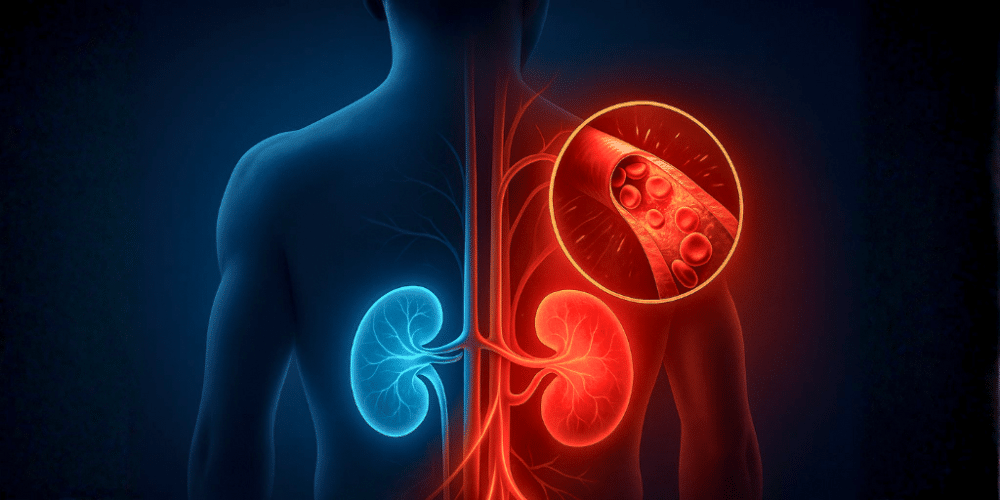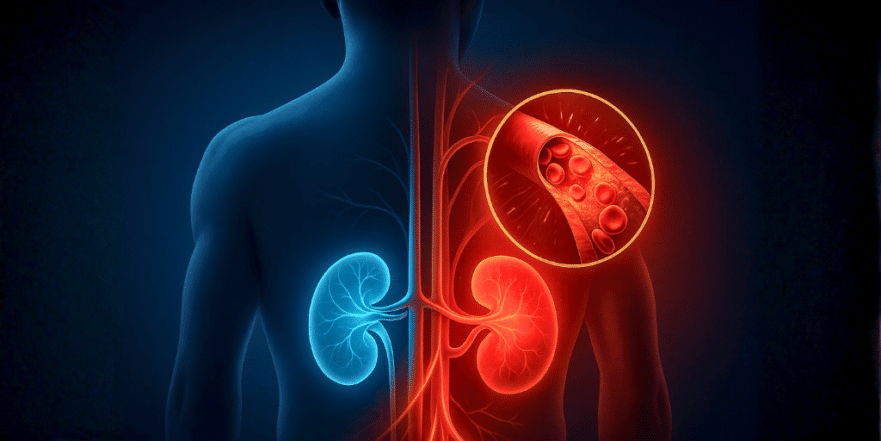
Have you ever wondered why your urine turns fluorescent yellow after taking vitamins, or why it gets foamy sometimes? Could these be the first signs of kidney disease? Probably not. But you would be shocked at what you can learn about your kidney health just by looking in the toilet bowl. And why should you care? Because kidney disease is on the rise, and far too many people are completely unaware that their kidneys are being silently damaged. The goal here isn’t to scare you, but to empower you with the knowledge to help your kidneys last a lifetime.
While changes in your urine are definitely clues you shouldn’t ignore, the single most important first sign of kidney trouble is something many people dismiss as normal. In this article, we’re going to break down the clues your body gives you, from the toilet bowl to your vital signs, so you can become proactive about your health. The key to preserving your kidneys is understanding the simple, common signs that people often overlook until it’s too late. Nine out of ten people with chronic kidney disease don’t know they have it until the damage is severe, but you don’t have to be one of them. (Based on the insights of Jia-Yia Liu)
Key Takeaways
- The #1 Sign: Persistent high blood pressure is the most important early indicator of kidney strain and damage, long before other symptoms appear.
- Urine Clues: Changes in your urine—like foaminess, unusual colors, or a sudden increase or decrease in frequency—are important signals from your body that something is amiss.
- Silent & Irreversible: Kidney damage happens silently over years. You are born with a fixed number of kidney filters (nephrons), and once they are lost, they are gone forever.
- You Are in Control: Monitoring your blood pressure, being mindful of certain medications, and making smart dietary choices are the most powerful things you can do to protect your kidneys.
1. What Your Toilet Bowl Can (and Can’t) Tell You
It’s always a good idea to take a peek in the toilet bowl before you flush. The clues you find there can be your first line of defense. So, how much should you be peeing? Typically, an adult pees about four to eight times a day. If you’re drinking two liters of fluid, you can expect to urinate about 1.5 liters.
If you find yourself peeing too little (less than half a liter a day), it could be a sign of severe dehydration or a potential problem with your kidneys, bladder, or prostate. On the other hand, if you’re running to the bathroom constantly, it could be due to several factors. Medications like diuretics, excessive salt or protein intake, or simply drinking too much liquid can be the cause. However, frequent urination, especially at night, can also be a telltale sign of uncontrolled blood sugar, pointing to pre-diabetes or diabetes. When your blood sugar is high, your body tries to get rid of the excess sugar through your urine, pulling water along with it and causing dehydration.
2. The Mystery of Foamy Urine: A Sign of Leaky Filters?
Have you ever noticed bubbles in your urine that don’t pop right away, creating a foam? While a few bubbles from a strong stream are normal, persistent foam can be a sign of protein in your urine, a condition called proteinuria. Think about it: you can’t froth plain water, but you can froth milk for a latte. Why? Because the proteins in the milk stabilize the bubbles. The same principle applies to your urine. Healthy kidneys are expert filters and should allow almost zero protein to escape.
When your kidney’s filters (called glomeruli) become damaged or leaky, protein can slip through into your urine. This can be caused by conditions like diabetes, high blood pressure, or kidney inflammation. It’s a common misconception that eating more protein will make you pee out more protein. Your gut breaks dietary protein down into amino acids. While eating excessive protein forces your kidneys to work harder to excrete the waste product (urea), which can cause dehydration and strain, it doesn’t cause your body’s whole proteins to leak into the urine. Foamy urine is a clue that your body’s own protein is escaping, signaling that the filters might be compromised.
3. Decoding Your Urine’s Color and Acidity
Beyond foam, the color of your urine is a powerful indicator. A pink or reddish tinge could mean there’s blood, which is never normal (unless it’s related to a woman’s menstrual cycle). Bleeding can come from the kidneys or the bladder and can be caused by kidney stones, infections, or even cancer. Brown or tea-colored urine might suggest old blood or the presence of bilirubin, pointing to a potential liver problem.
Your diet also has a profound effect on your urine’s chemistry. Diets high in animal protein, like a carnivore or ketogenic diet, make your body produce more acid. Your kidneys have to work to expel these acids, making your urine more acidic. This acidic environment increases your risk of developing certain types of kidney stones, like uric acid stones. Conversely, a diet rich in whole plant foods tends to make your urine more alkaline, which can help reduce the risk of stone formation. Dehydration is a major factor in stone formation, as it concentrates minerals in the urine, allowing them to crystallize.
4. The Medications That Could Be Harming Your Kidneys
Your kidneys are highly sensitive to what you put in your body, including medications. Many common over-the-counter drugs, especially nonsteroidal anti-inflammatory drugs (NSAIDs) like ibuprofen and naproxen, can cause kidney injury if used too frequently or in high doses. Millions of people take these without realizing the potential risk.
Prescription medications can also impact the kidneys, but the good news is that your doctor should be monitoring your kidney function if you’re on a drug known to affect them. This is why it’s crucial to never stop a prescribed medication without consulting your provider. The key is to be aware and have an open conversation with your doctor about all the medications you take, including over-the-counter ones, to ensure your kidney health is being protected.
5. Your Kidneys’ “Bank Account”: Understanding Nephrons
Here’s a fascinating and critical fact: you are born with all the kidney filters you will ever have. These microscopic filters, called nephrons, are at their maximum number at birth—roughly one to two million in total. Just like a woman is born with all her eggs, you don’t grow more nephrons later in life. Once a nephron is damaged and lost, it’s gone forever.
This is why protecting your existing nephrons is so important. You can function perfectly normally even after losing a significant number of them—this is why people can donate a kidney and live a healthy life. However, this resilience is also why kidney disease is so deceptive. You won’t feel any symptoms until the damage is quite advanced, often after more than 50% of your nephrons are gone. This brings us to the most important sign of all.
6. The #1 Sign of Kidney Damage: Persistent High Blood Pressure
This is the big one. The most important, and often earliest, sign that your kidneys are under stress and losing nephrons is persistent high blood pressure. You might hear people say, “I feel fine, even though my blood pressure has been high for years.” That’s the trap. High blood pressure is a silent process that relentlessly damages the delicate blood vessels in your kidneys.
Think of it like the water pressure in your house. If the pressure is too high, it puts constant stress on the pipes. Over time, this can lead to silent leaks and eventually a burst pipe, causing massive damage. High blood pressure does the same thing to your kidneys, brain, heart, and every other organ. As nephrons are destroyed, your kidneys become less efficient at managing sodium and fluid, which in turn drives your blood pressure even higher, creating a vicious cycle. Your creatinine levels won’t rise and your filtration rate won’t drop until over half your nephrons are already gone. High blood pressure is the warning call that your kidney’s “bank account” of nephrons is being depleted.
7. Taking Control: How to Protect Your Kidneys for Life
The most powerful thing you can do for your kidneys is to get your blood pressure under control. In this day and age, with affordable home blood pressure monitors, there is no reason not to know your numbers. Aim for a normal reading consistently.
Your diet is your primary tool. Reducing your intake of sodium, moderating protein, and keeping your blood sugar in check are fundamental steps. Medications for blood pressure are an essential bridge to protect your organs while you make these lifestyle changes. However, they should not be used as a lifelong enabler for a poor diet. Work with your doctor to use medication effectively while you transform your lifestyle, with the goal of reducing or eliminating them if possible. Sporadically taking your medication is not effective and allows your blood pressure to fluctuate, which continues to damage your kidneys.
Conclusion
Your kidney health is like a credit card debt; you don’t feel the burden of small charges, but over time they accumulate until the collectors start calling. You won’t feel kidney problems until the damage is severe and the consequences—swelling, fatigue, anemia, and eventually the need for dialysis—are life-altering. Don’t wait for the warning signs in your urine to become obvious. The most important clue is your blood pressure. By monitoring it, working with your doctor, and taking charge of your diet, you can protect these vital organs and ensure they support you for a lifetime.
Source: Jia-Yia Liu

